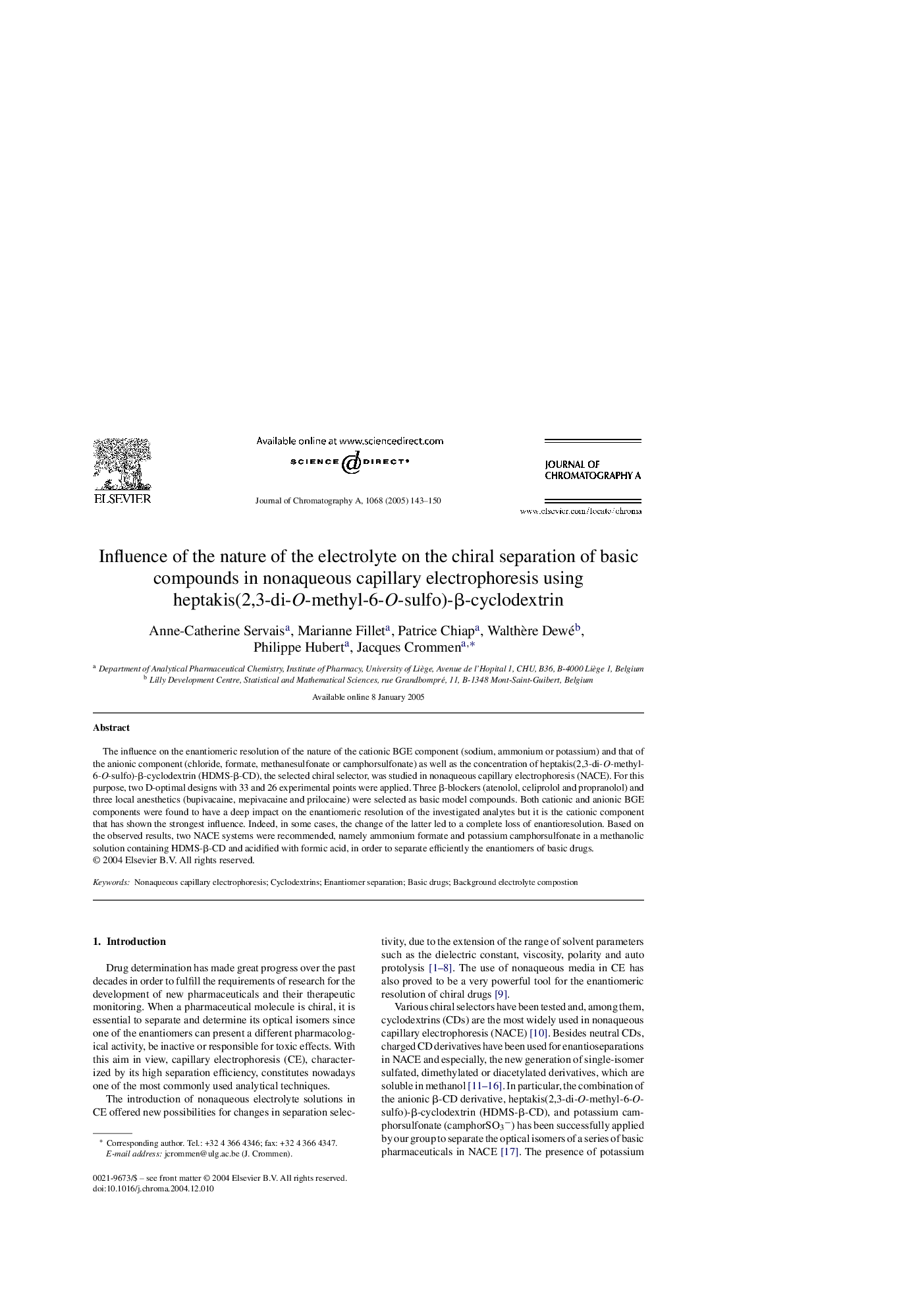| کد مقاله | کد نشریه | سال انتشار | مقاله انگلیسی | نسخه تمام متن |
|---|---|---|---|---|
| 10549513 | 965614 | 2005 | 8 صفحه PDF | دانلود رایگان |
عنوان انگلیسی مقاله ISI
Influence of the nature of the electrolyte on the chiral separation of basic compounds in nonaqueous capillary electrophoresis using heptakis(2,3-di-O-methyl-6-O-sulfo)-β-cyclodextrin
دانلود مقاله + سفارش ترجمه
دانلود مقاله ISI انگلیسی
رایگان برای ایرانیان
کلمات کلیدی
موضوعات مرتبط
مهندسی و علوم پایه
شیمی
شیمی آنالیزی یا شیمی تجزیه
پیش نمایش صفحه اول مقاله

چکیده انگلیسی
The influence on the enantiomeric resolution of the nature of the cationic BGE component (sodium, ammonium or potassium) and that of the anionic component (chloride, formate, methanesulfonate or camphorsulfonate) as well as the concentration of heptakis(2,3-di-O-methyl-6-O-sulfo)-β-cyclodextrin (HDMS-β-CD), the selected chiral selector, was studied in nonaqueous capillary electrophoresis (NACE). For this purpose, two D-optimal designs with 33 and 26 experimental points were applied. Three β-blockers (atenolol, celiprolol and propranolol) and three local anesthetics (bupivacaine, mepivacaine and prilocaine) were selected as basic model compounds. Both cationic and anionic BGE components were found to have a deep impact on the enantiomeric resolution of the investigated analytes but it is the cationic component that has shown the strongest influence. Indeed, in some cases, the change of the latter led to a complete loss of enantioresolution. Based on the observed results, two NACE systems were recommended, namely ammonium formate and potassium camphorsulfonate in a methanolic solution containing HDMS-β-CD and acidified with formic acid, in order to separate efficiently the enantiomers of basic drugs.
ناشر
Database: Elsevier - ScienceDirect (ساینس دایرکت)
Journal: Journal of Chromatography A - Volume 1068, Issue 1, 11 March 2005, Pages 143-150
Journal: Journal of Chromatography A - Volume 1068, Issue 1, 11 March 2005, Pages 143-150
نویسندگان
Anne-Catherine Servais, Marianne Fillet, Patrice Chiap, Walthère Dewé, Philippe Hubert, Jacques Crommen,